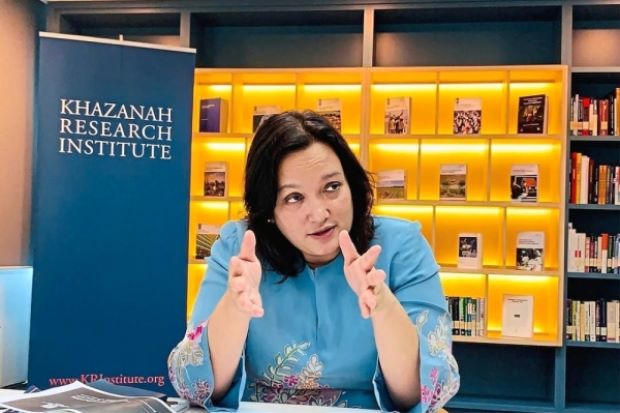
Khazanah Research Institute director Suraya Ismail once likened houses to cars. Although that analogy may not be appropriate as a car is a depreciating asset, she was trying to bring home the point that just as our roads are not filled with Mercedes and Bentleys, so our housing market must display a range of prices.
Going by that metaphor, it would seem that Seremban has a lot of highly priced cars on her roads.
Suraya’s analogy has been neatly played out in Seremban over the past decade in the life of a seven-year-old boy and his working mother.
Yuan, in her late 30s, commutes between Seremban and Kuala Lumpur, heading 70km north.
Her husband bought the double-storey terraced house for about RM200,000 more than 10 years ago.
After the birth of their son, Yuan’s husband saw his son only on weekends because his work takes him to different parts of the country.
Yuan’s parents live in Cheras, Kuala Lumpur.
She can get a job in Seremban but she will not get the income level Kuala Lumpur is giving her.
She reckons the house is worth about RM500,000 today.
In other parts of the same township, prices have risen to between RM700,000 and RM800,000 today for a double-storey terraced house.
Separately, during a trip to Bandar Ainsdale, Seremban about 70km from Kuala Lumpur last week, house prices there are between RM600,000 and RM700,000 today.
Bandar Ainsdale is about 10km from Seremban 2, where Yuan and her family lives.
Unaffordable category
According to the latest publication by Khazanah Research Institute’s “Rethinking Housing: Between State, Market and Society”, Negri Sembilan, where Seremban and Bandar Ainsdale are located, has fallen into the severely unaffordable category (see table on page 13).
Ironically, Seremban has not reached city status, although this aspiration has been there in the local state office for 10 years.
In January 2018, the-then Mentri Besar Datuk Seri Mohamad Hasan said although the federal government had, in 2012, given his office the green light to call Seremban a city, the town which a population of less than 400,000 according to statistics from Seremban municipality council for 2018, lacked the infrastructure and public amenities.
If Nilai is included, population rises to about 630,000. One of the criteria for city status is population.
In a Jan 14, 2018 report, he said his office “were in the midst of improving things such as housing, public transportation, garbage collection, inter-town connectivity, public infrastructure and an improved road network.”
“My team found some of these services wanting and decided against pursuing the city status further,” he said.
Which seems wise, because to pursue city status for its own sake would render the title meaningless when the infrastructure, amenities and services are not ready.
Lead author of the Khazanah Research Institute report, Suraya Ismail said a house is not just a shelter.
It also serves as an anchor for households to participate in economic and social and communal activities.
In different communities around the world, an “ecosystem” system exists comprising one’s home, one’s workplace and one’s public and social places.
High connectivity between these places reflects the efficiency of a city.
In short, a house is not bought in isolation.
That being the case, why are house prices in Seremban severely unaffordable?
There is this disconnect and that is the situation faced by most of the towns in Malaysia today, and which is why so many houses have been completed but remain unsold.
Suraya posed this question about high house prices to a major developer building in Seremban.
“The company official said they would price the units accordingly.
“So I ask him, you mean you have a bungalow that cost RM1mil for buyers from Kuala Lumpur and that same house will cost RM500,000 for those who live in Seremban?”
There are obviously two markets in Seremban today, one with a lower income level, and the other a higher disposable income, but both pay the same price for a house in a locality that has yet to achieve city status.
“What is the reach of the Klang Valley today?” Suraya asks. A pause.
“It is going to Seremban now.”
Suraya says Seremban house prices are moving towards those in the Klang Valley.
Affordable housing
Just as there are two sets of buyers in Seremban, there are two sets of house buyers in the country, those who buy private housing and those who buy social sector housing.
Using the car metaphor, those who buy a BMW and those who opt for a MyVi or cheaper form of transportation.
Suraya says: “We have to understand that there are two different markets. We have to look at the provision of housing from the social and the market sector standpoint.
“Social sector means people have a housing need but don’t have the ability to pay for it.
“Market sector refers to those who have the ability to get the financing for the house they want to buy.”
Different policies are needed for both sectors but affordability underpins both markets.
People have aspirations, whether they are renting a DBKL flat at RM124 a month or living in private sector housing.
“They must be able to afford those aspirations,” she says.
Suraya uses the median multiple approach to measure affordability although developers want to use other measures.
It stands to reason why it has to be measured against one’s income level, she says, because a house is a big-ticket item.
Suraya says according to Napic statistics, launches in 2008 took off from RM1mil onwards, with the bulk of them priced RM500,000 and more. This had the tendency to push out units priced RM250,000 and below. The higher the price, the greater the margin of profit for the developer.
Yuan and her family are fortunate to have bought their house at about RM200,000 about 10 years ago but for those who came after them, prices have tripled, or more than tripled.

